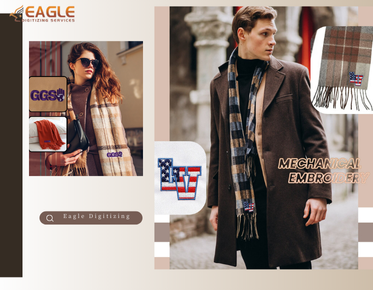DTG Printing vs. Screen Printing: Which is Best for Your Needs?
In the world of custom apparel and textile printing, two methods stand out: Direct-to-Garment (DTG) printing and screen printing. Each has its own set of advantages and disadvantages, making the choice between them dependent on specific needs and circumstances. In this blog, we will explore the intricacies of both methods to help you decide which is best for your project. Whether you're a small business owner, a designer, or someone interested in printing technology, understanding these methods can significantly impact your decision-making process. For those interested in the technical aspects of vector graphics, this knowledge can also enhance your design capabilities.
Understanding DTG Printing
Direct-to-Garment printing is a relatively new technology that allows for printing directly onto textiles using inkjet technology. This method is akin to using a standard printer, but instead of paper, it prints on fabric. DTG is known for its ability to produce high-quality, full-color prints with a soft feel. It is particularly effective for complex designs and photographs that require a wide range of colors and gradients.
Advantages of DTG Printing
One of the primary advantages of DTG printing is its ability to produce detailed and vibrant prints without the need for color separation. This makes it ideal for small orders or one-off designs, as there is no need for extensive setup. Additionally, DTG printing is more environmentally friendly compared to traditional methods, as it uses water-based inks and produces less waste.
Limitations of DTG Printing
Despite its advantages, DTG printing does have some limitations. It is generally slower than screen printing, making it less suitable for large orders. The cost per unit can also be higher, especially for bulk printing. Moreover, DTG printers require regular maintenance and can be sensitive to fabric types, which may affect the print quality.
Exploring Screen Printing
Screen printing, also known as silkscreen printing, is a traditional method that has been used for centuries. It involves creating a stencil (or screen) and using it to apply layers of ink on the printing surface. This method is renowned for its durability and vibrant colors, making it a popular choice for printing on a variety of materials, including textiles, ceramics, and wood.
Advantages of Screen Printing
Screen printing is highly efficient for large orders, as the setup cost is spread over a large number of items, reducing the cost per unit. It is also versatile, allowing for printing on a wide range of materials and surfaces. The prints produced are durable and can withstand multiple washes without significant fading.
Limitations of Screen Printing
However, screen printing is not without its drawbacks. The initial setup can be time-consuming and costly, making it less suitable for small orders or designs with many colors. Each color requires a separate screen, which can increase the complexity and cost of the process. Additionally, screen printing is less environmentally friendly due to the use of chemicals and the potential for waste.
Choosing the Right Method for Your Needs
When deciding between DTG and screen printing, consider the nature of your project. If you need a small batch of shirts with a complex design, DTG might be the better option. On the other hand, if you're looking to produce a large quantity of items with a simple design, screen printing could be more cost-effective. It's also important to consider the fabric type and the desired durability of the print.
Future Trends in Printing Technology
As technology advances, both DTG and screen printing are evolving. Innovations in ink technology and printing equipment are making these methods more efficient and environmentally friendly. The integration of digital tools and automation is also streamlining the printing process, allowing for greater customization and faster turnaround times. For those interested in the future of printing, keeping an eye on these developments is crucial.
In conclusion, the choice between DTG and screen printing depends on your specific needs and priorities. By understanding the strengths and limitations of each method, you can make an informed decision that aligns with your goals. For those looking to enhance their designs, Eagle Digitizing excels in delivering professional vector artwork conversion services, transforming creative visions into scalable designs.
.png)

.png)
